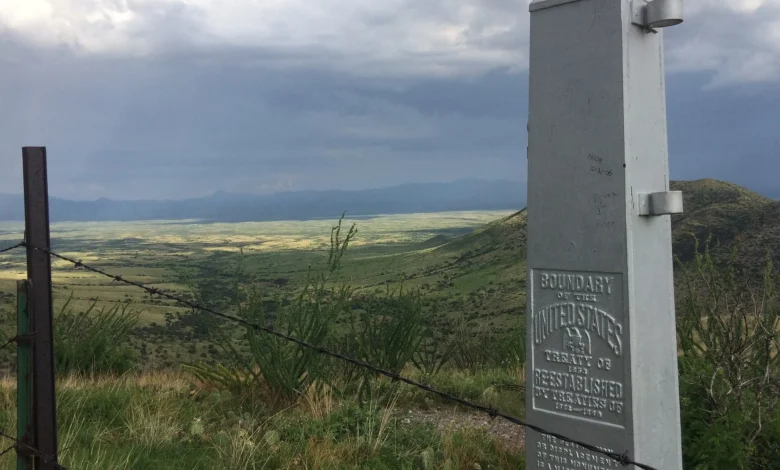Hikers Blocked From the Arizona Trail’s Southern Terminus After DHS Installs Razor Wire

The Arizona Trail Association says it expects the terminus’s closure, which its executive director called “nothing less than desecration,” to be permanent.
Border Monument 102 before the latest round of fencing. (Photo: NPS Photo/C. Bentley)
Updated November 7, 2025 06:20PM
Hikers can no longer access the monument at the Arizona Trail’s (AZT) southern terminus after the Department of Homeland Security blocked it off with razor wire, the nonprofit that helps manage the famed long trail said.
In an Instagram post on November 6, the Arizona Trail Association (ATA) wrote that contractors for the DHS had installed concertina wire at the terminus, blocking hikers from reaching Border Monument 102 at Coronado National Memorial, where AZT hikers traditionally started or ended their journeys.
“In the interest of safety, please do not attempt to cross the wire for a photo at the monument,” the group wrote.
In an email to Backpacker, Matthew Nelson, the executive director of the ATA, wrote that the group had received “no notice whatsoever” before the wire went up, and didn’t discover the new fencing until hikers and one of the organization’s trail stewards notified them. He estimated that the wire had gone up between October 21 and November 3. (As of publication time, the DHS had not returned an email seeking comment.)
The nonprofit noted in its post that border wall construction, including blasting, is currently taking place to the west of the memorial, and warned hikers visiting the area to expect “auditory and visual impacts.” The DHS plans to construct an additional border wall at the terminus itself in August 2026; the ATA noted that trail closures “may be necessary” at that time.
Nelson said he doesn’t expect the government to restore access to the now off-limits monument.
“Sadly, access to Border Monument 102 is a thing of the past,” he said. “Once steel wall started being built in 2020, we were told the monument would be off-limits as it would be 10 feet south of the new wall. Alongside our partners at the National Park Service, we advocated for altering the wall’s design to go around the monument so it would remain the southern terminus marker, but our requests were ignored.” While the ATA is working with the park service to build a new terminus with a monument, picnic tables, and shade structure north of the planned wall and recently-constructed service road, Nelson said construction won’t be able to start until 2027.
The AZT runs 800 miles through its eponymous state, crossing a half-dozen mountain ranges, long stretches of bone-dry desert, and part of the Grand Canyon along the way. While the U.S. officially designated the AZT as a National Scenic Trail in 2009, Border Monument 102 dates back much further, to the Gadsen Purchase of 1854, when the United States acquired the southern portion of Arizona and the New Mexico bootheel from Mexico. When the trail’s backers built the AZT’s northern terminus on the Utah border, they designed its monument to the same dimensions.
To see a trail landmark with so much history fenced off is “nothing less than desecration,” said Nelson, who questioned the necessity of building a physical barrier a mile downhill from a Border Patrol observation post in an area he says is too rugged for vehicular smuggling.
This is the second time this fall that the White House’s campaign to increase security at the U.S.—Mexico border has closed or restricted access to a major long trail’s southern terminus. In late September, the Continental Divide Trail Coalition said that the federal government would now require hikers to apply for a permit from the military and undergo a background check to access the CDT’s southernmost 1.1 miles, and that non-U.S. citizens would require a government sponsor and an escort.
Unlike on the CDT, AZT hikers who want to take a snapshot at the official end of the trail are out of luck for now.
“If you are among the thousands of AZT thru-hikers who were able to capture a photo of your accomplishment at Border Monument 102, consider yourself fortunate,” the ATA wrote. “That seems to now be a part of the trail’s history.”





